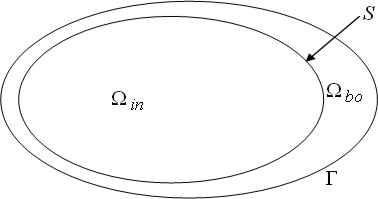
engineering & technology publications
ISSN 1759-3433
PROCEEDINGS OF THE FIFTH INTERNATIONAL CONFERENCE ON ENGINEERING COMPUTATIONAL TECHNOLOGY
A Metal Forming Analysis Using the Point Collocation Method with a Boundary Layer of Finite Elements
Department of Mechanical Engineering, Kagoshima University, Japan
Meshless methods require no costly mesh generation and remeshing. In addition, meshless methods allow the arbitrary placement of nodes, therefore the solution and its derivatives may be obtained directly where they are required. The meshless methods are mostly based on the weak form (integral equations). In some of the meshless methods, background meshes are inevitable in the implementation to obtain the numerical integration. The others of the above meshless methods are truly meshless methods, in which no background meshes are introduced. In most meshless techniques, however, complicated non-polynomial interpolation functions are used which render the integration of the weak form rather difficult. Failure to perform the integration accurately results in loss of accuracy and possibly stability of the solution scheme (specially, in nonlinear problems). The integration of complicated non-polynomial interpolation function costs much CPU time, too.
The point collocation method has no issues with respect to the integration scheme, the integration accuracy and the integration CPU time. Therefore, the point collocation method has some advantages such as no mesh, no integration, no fundamental solution.
While, the robustness of the point collocation method is an issue especially when scattered and random points are used. To improve the robustness of the point collocation methods, some studies (such as [1]) suggest that the positivity conditions can be important when using the point collocation methods. For boundary points, however, the positivity conditions cannot be satisfied, so that it is possible to get large numerical errors from the boundary points when using the point collocation methods. Specifically, the errors could arise in point collocation analyses of metal forming problems which have complicated boundary conditions.
In this paper, a point collocation method with a boundary layer of finite elements is developed. By introducing a boundary layer of finite element in boundary domain of the analyzed body, the unsatisfactory issue of the positivity conditions of the boundary points can be avoided, and the complicated boundary conditions can be easily imposed with the boundary layer of finite elements. A plane strain forging process is analyzed by using the point collocation method with a boundary layer of finite elements.
The roblem domain ![]() is divided into two subdomains, the interior domain
is divided into two subdomains, the interior domain
![]() and the
boundary domain
and the
boundary domain
![]() . The surface between
. The surface between
![]() and
and
![]() is defined as S (see Figure 1).
is defined as S (see Figure 1).
In
![]() , the unknown function can be approximated by the moving least-squares
approximation. Over the boundary domain
, the unknown function can be approximated by the moving least-squares
approximation. Over the boundary domain
![]() , the finite element method (FEM)
with one layer of finite elements is used. On surface S between
, the finite element method (FEM)
with one layer of finite elements is used. On surface S between
![]() and
and
![]() , the
compatibility condition of velocity is imposed. On
, the
compatibility condition of velocity is imposed. On ![]() , the boundary conditions are
imposed by using FEM.
, the boundary conditions are
imposed by using FEM.
For a point on S, because it is not a boundary point, a small domain can be defined, in which the positivity conditions are satisfied. Therefore, numerical errors from the boundary points when using other meshless methods can be avoided in the point collocation method with a boundary layer of finite elements.
- 1
- X. Jin, G. Li, N.R. Aluru, "Positivity conditions in meshless collocation methods", Computer Methods in Applied Mechanics and Engineering, 193, 1171-1202, 2004. doi:10.1016/j.cma.2003.12.013
purchase the full-text of this paper (price £20)
go to the previous paper
go to the next paper
return to the table of contents
return to the book description
purchase this book (price £105 +P&P)
